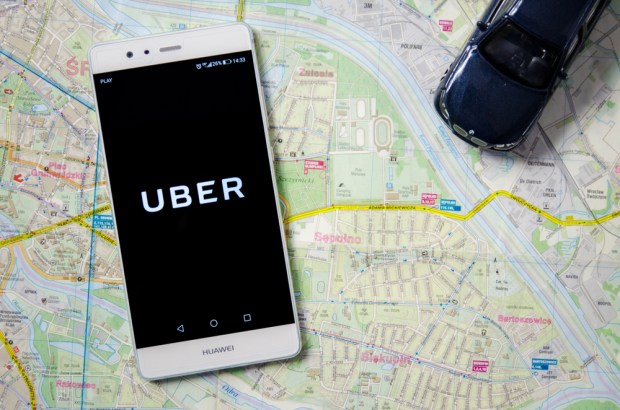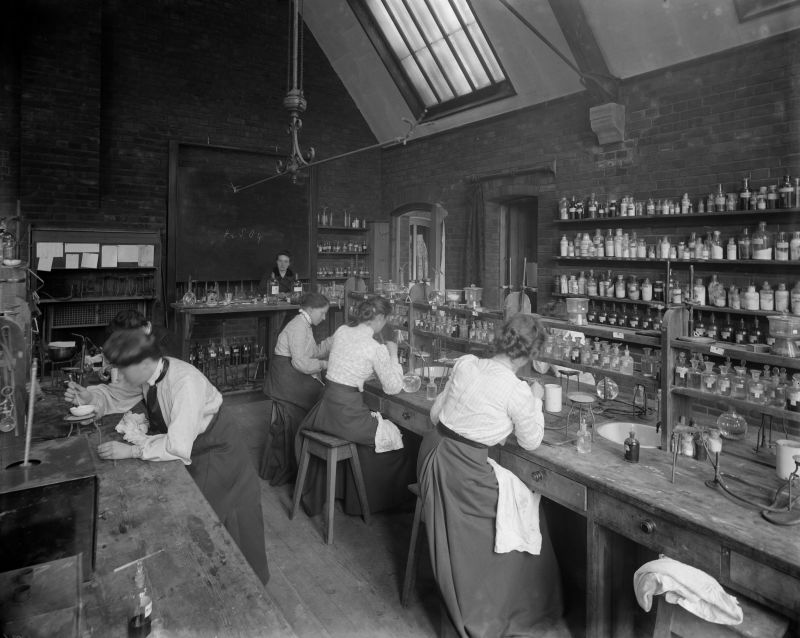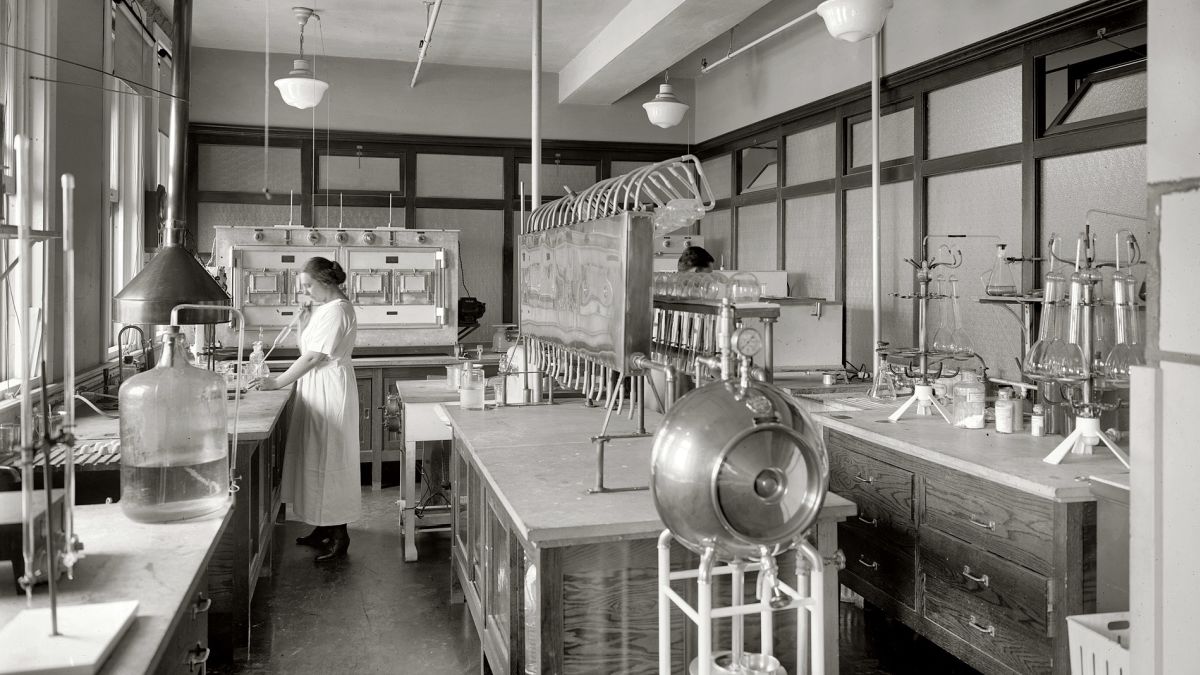What Innovators Can Learn From Uber Cash

Long before innovators began talking about the power of ecosystems to transform commerce, scientists spent centuries studying them under microscopes in their labs.
Biologists wanted to better understand how to keep the human body’s ecosystems from being devastated by disease, so humans could live longer, healthier lives.

Source: https://io9.gizmodo.com/incredible-historic-pictures-of-early-science-labs-485796493
Ecologists wanted to better understand the relationship between living things and their environment to improve the health of Mother Earth.
Marine scientists wanted to better understand the health of Mother Earth and its impact on the ecosystems living in the oceans miles beneath it.

Source: https://io9.gizmodo.com/incredible-historic-pictures-of-early-science-labs-485796493
Today, payments innovators want to better understand how their innovation could make existing ecosystems stronger and healthier, destroy them on the way to creating something different (and they think better) or blunt their ambitions entirely.
It’s a useful metaphor for examining one of the latest payments and commerce ecosystem moves: Uber, with Uber Cash.
An Ecosystem By Any Other Name
As different as the ecosystem pursuits that scientists and innovators may have, success means addressing the complex, and often intractable, challenge that cuts across all of them: finding the balance that keeps ecosystems healthy.
Creating and then keeping that balance today is no different than what scientists in their labs learned long ago: managing the delicate interdependencies of the four characteristics that all ecosystems share — and doing that in near perfect harmony.
Ecosystems need an energy source that gives producers the fuel to create the things that consumers want and need. Absent an energy source, the ecosystem dies. Decomposers are the ecosystem wild card. These ever-present wild cards can tip the balance of an ecosystem one way or the other — sometimes by working quietly under the surface for long periods of time to fortify its health and keep the balance intact. Sometimes working quietly under the surface to mount a surprise attack that is too large for the ecosystem and its existing energy source to fight back and survive.
It’s why the word ecosystem, when used to describe the payments and commerce segment, is much more than just a buzzword.
Substitute producer for buyer or supplier.
Consumer for the end user.
Decomposer for innovator large or small, established or emerging.
Fuel source for that singular feature or function that ecosystems use to create the value that keeps producers and consumers on board — and deflect or embrace the actions of emerging innovators.
It’s why the fuel source is the ecosystem’s unsung hero and secret weapon.
The Ecosystem’s Unsung Hero
The story of Uber and the massive disruption to the century-old regulated taxi industry it created when it launched is well-documented. The nuances of that disruption, however, may not be.
Yes, of course, Uber upset the balance of power in the taxi ecosystem by giving consumers a better “taxi” experience using, at first, idle black car drivers and then later, just about anyone with a newish-car and a driver’s license.
Uber rode the tailwinds of smartphone adoption, app stores, well-developed technologies like GPS and (at launch) well-established mapping software provided by Google to blend the online and offline worlds around a consumer experience that before lacked certainty and reliability.
But the fuel source that ignited the Uber platform wasn’t the smartphone (although that surely helped) but payment cards and the card networks. It was how Uber used them both that really helped ignite its platform.
A consumer could pop open the Uber app, request a ride, be messaged via the app that the driver would arrive in three minutes at her doorstep, watch the driver’s progress, contact the driver if needed — all things that were a monumental improvement over standing in the street hoping for a taxi.
But it was the experience of hopping out of the car upon reaching that final destination without having to pay that defined what would be forever known as “The Uber Experience”: The experience of having the card registered to that rider’s Uber app automatically charged for the cost of that ride, including a tip for the driver, without the consumer having to do anything at all other than leave the car.
The magic of Uber was the payment experience — an experience that consumers valued because, well, they never had to experience the act of payment at all. It was an invisible payments experience made possible because consumers already had cards in their wallets they could register with the app.
Without the ability for users to register a credit or debit card to their Uber app and experience that now infamous “Uber Experience,” Uber would be little more than a more predictable taxi service in a nicer car that smelled better.
The “Uber Experience” helped ignited the Uber platform, city by city, and built the habituation that its ease of use created. Uber reported in July of 2018 that it had completed 10 billion trips, with Uber users spending, on average, $50 a week with Uber. Some spend much more in cities like Boston, New York and San Francisco.
But that’s just one side of the Uber ecosystem.
Fleets As The Fuel
Uber created an entirely new vocabulary word and category of transportation service called ridesharing and a new way of describing their drivers — gig workers.
Uber drivers used their own vehicles to “share” rides with passengers willing to pay them more than a basic taxi ride for getting them from point A to point B because of the better experience that Uber provided. Uber’s platform paid those drivers — all independent contractors — for those services. Uber drivers had the flexibility to clock on and off when they wanted to work, be paid for the rides completed on those shifts and build their own businesses on top of the Uber platform.
Over the years, Uber’s ecosystem grew and thrived: a base of consumers with the Uber app and a base of drivers with the Uber app too who could be matched with consumers wanting a ride. Over the last nine years, Uber has built a thick supply of drivers and equally thick demand from consumers for their services in the 814 cities in which it now operates.
Over those nine years, Uber developed another valuable fuel source: its fleet of drivers.
Just like the original notion of giving idle black car drivers an opportunity to fill in the gaps between appointments with a few gigs, those drivers now powered a local fleet that could leverage its logistics expertise to expand the Uber ecosystem and power new services.
One of those is Uber Eats, which launched in 2014.
Uber Eats is an online delivery aggregator that links an existing Uber consumer’s account credentials with a service that delivers food to consumers from local restaurants.
Uber Eats took off, despite launching a decade after Grubhub, three years after Postmates and a year after DoorDash. Uber entered the food delivery arena with a decided advantage: an ecosystem powered by a density of users with registered card credentials and a fleet of drivers with an incentive to earn more money and the capacity and logistics expertise to deliver restaurant orders and keep restaurants front and center in the food delivery game.
Uber used both to get restaurants on board and keep its users and drivers on board too.
Today, many call Uber Eats the company’s secret weapon.
Since its launch, Uber Eats has built a network of restaurants in some 280 cities and, according to CEO Dara Khosrowshahi, a business with a $6 billion run rate in 2018 that has grown 200 percent over the last year. That compares with a roughly $3.7 billion run rate for Grubhub.
It’s been reported that Uber Eats’ users spend, on average, $220.37 a year — far more than is spent on competitors such as Grubhub — and are loyal to its platform. Uber Eats users concentrate 53.6 percent of their food delivery spend using it.
Closing The Loop
In 2016, Uber launched Local Offers with Visa, and in 2017, it launched the Uber co-branded Visa card issued by Barclays.
With Local Offers, users that register a Visa credit and some debit cards to the Uber app and use it to pay for goods and services at participating stores accrue rewards points. Those points could be used to pay for Uber rides and orders placed via Uber Eats.
The no-fee Visa Barclay’s card provides 4 percent cash back rewards when the card is used for dining, including at Uber Eats, and 3 percent when used for travel.
The Uber Cash card launched last week is now the repository for those rewards, credits and gift cards, a stored value account with balances that can be spent on services inside the Uber ecosystem. Using Uber Cash also earns more rewards for users. Uber is kicking in cash to get users to establish an Uber Cash account and attach a funding source to keep it topped up: $5 on a $95 load to get the Uber Cash account balance to a nice round $100, for example.
Uber says that Uber Cash simply organizes, in one place, the various credits and rewards that Uber users already have available to them today. Giving users that visibility is also an incentive, Uber hopes, to use it more — creating the strong network effects set in motion when consumers accrue rewards and can use rewards to pay for services as easily as they can using any other payments method.
In addition to offering users a one-stop shop for Uber credits and rewards, Uber says that it’s getting a nice economic bump from having access to the float that these balances generate — more material now as interest rates inch up.
All fueled by payments and payments cards.
Fueling The Ecosystem Pump
The fuel that powers ecosystems is usually obvious — hiding in broad daylight — but essential to igniting an ecosystem and keeping it healthy. It gives life to ecosystems and helps them grow. It can also become the basis to build new value inside existing ecosystems — or leveraged by others to destroy its value.
Uber is hoping that Uber Cash is the fuel that will keep its own ecosystem in balance.
Lyft is out to eat its lunch and is making inroads in the ridesharing part of its business. So, too, are the regulators in some cities who are working overtime to make it difficult for Uber — and, in some cases, Lyft now too — to operate within them.
Scooter and bike-sharing apps are multiplying like rabbits in the spring in hipster cities with their (incredulous) multi-billion valuations and cheap-as-dirt fares. Uber’s CEO said buying JUMP bikes is a way to blunt that impact, even if it means taking a hit on margins across its ridesharing platform. Rumor has it that Uber is close to offering scooter services as well. The Uber app now makes it easy for users to switch and pay using their Uber credentials between ridesharing options.
Meanwhile, Grubhub, DoorDash and Postmates aren’t twiddling their thumbs, watching Uber eat their food delivery lunch either: All three are pursing very different strategies to strengthen their own ecosystems in an effort to destabilize Uber’s.
Uber, with Uber Cash, appears to be doubling down on the fuel source that ignited it — using payments to create a new Uber Experience that it hopes will keep the Uber ecosystem healthy and fend off ecosystem threats. That new payment experience offers more value to users each time it’s used to pay for the services its users already consume on a regular, even daily, basis.
With and without them.
Today that includes the many flavors of ridesharing it offers and food delivery via Uber Eats. Soon, that ecosystem will include alternative transportation options, including bike and scooter rentals that are now part of the Uber ecosystem.
And tomorrow, although Uber minimized this in my conversation with them last week, a wallet that could be used to pay for goods and services that are a contextual part of that Uber experience: order ahead for pick up at the same restaurants that may be part of the Uber Eats delivery network today or may want to be down the road.
Uber isn’t the first to use payments as the fuel to ignite a powerful, sticky ecosystem. PayPal and Amazon used the power of an easy way to pay two decades ago to create and grow powerful commerce ecosystems.
But payments, by itself, isn’t enough.
Hiding in plain sight is the experience wrapped around the payment that builds healthy ecosystems and keeps producers and consumers sticky — and makes it much harder for ecosystem destroyers to take root.
The lesson of Uber, PayPal and Amazon is that payments is but a means to that very powerful end.
